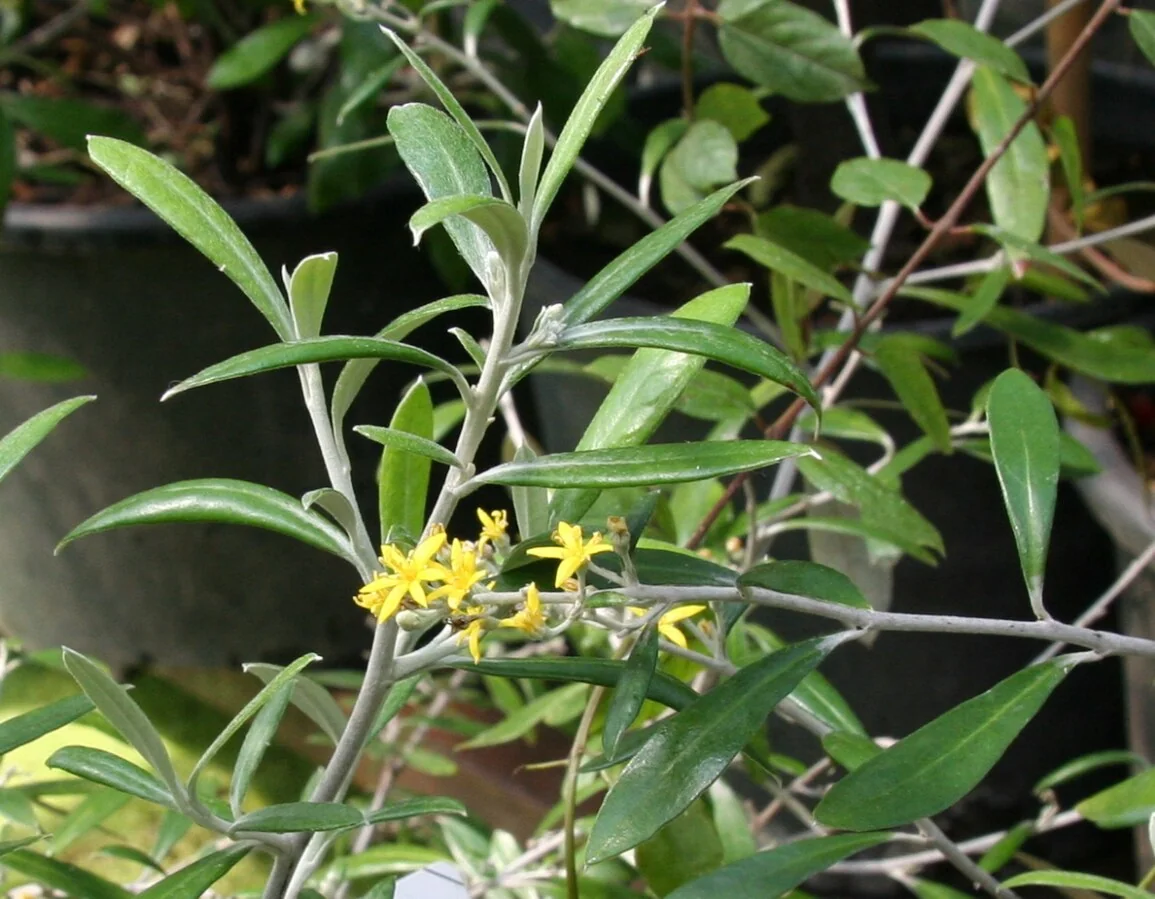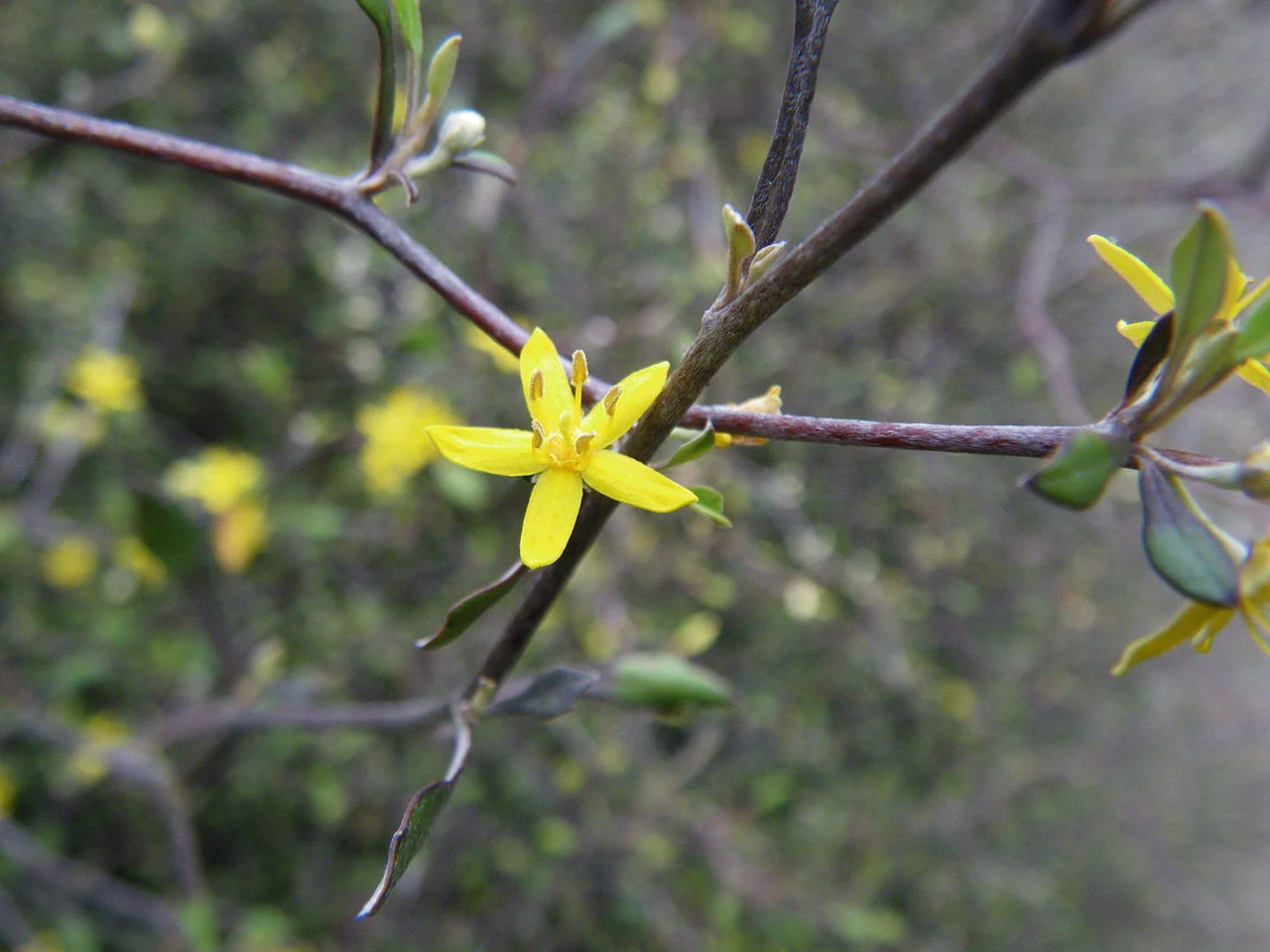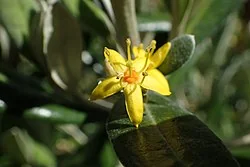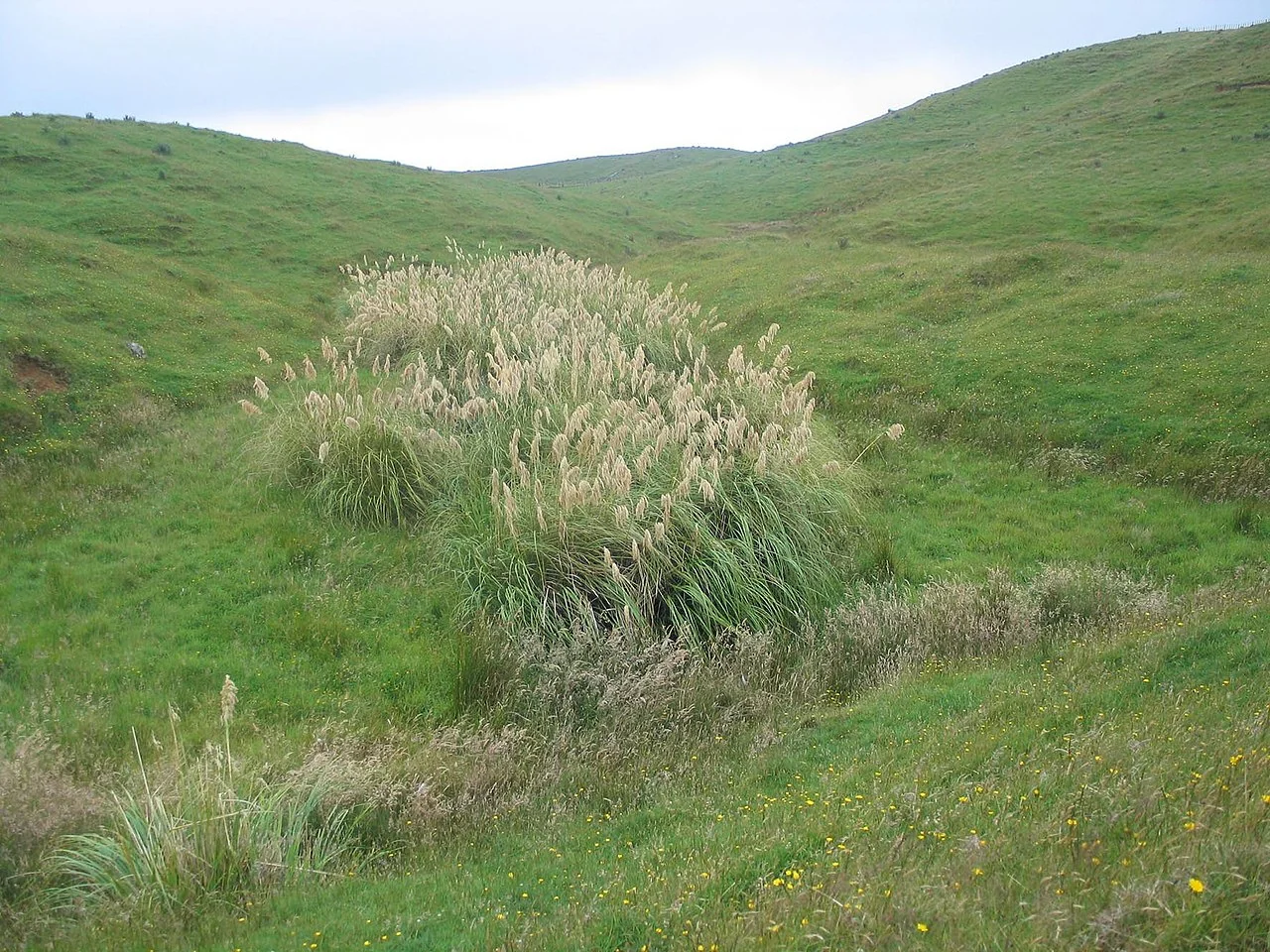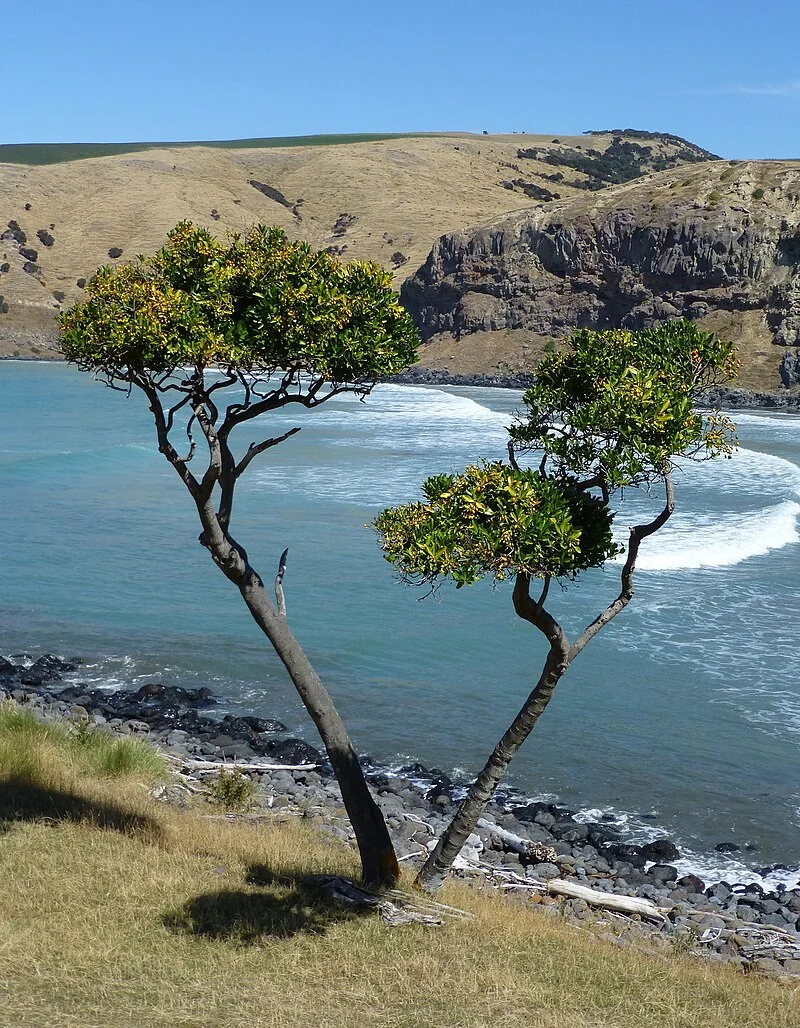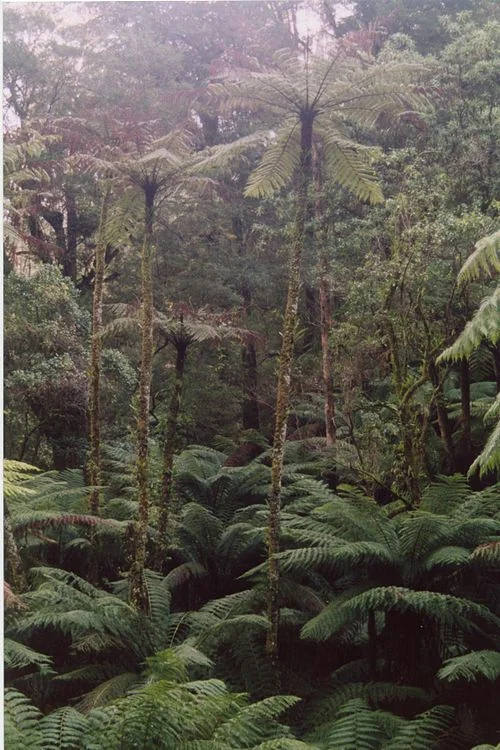
Dwarf Cabbage Tree
Cordyline pumilio
This native plant, known as Dwarf Cabbage Tree (scientific name: Cordyline pumilio), is a remarkable species endemic to New Zealand. It is characterized by its unique features, ecological role, and cultural significance. This comprehensive guide provides detailed information on its care, propagation, and importance within the New Zealand ecosystem. Understanding this plant contributes to the appreciation of our rich biodiversity and heritage. native trees

Plant Description
Botanical Features
Cordyline pumilio, also known as Dwarf Cabbage Tree, Pygmy Cabbage Tree, or TÄā koraha, is a narrow-leaved monocot shrub endemic to the North Island of New Zealand. It is the smallest of New Zealand's five native Cordyline species, typically growing as a small shrub up to 1 meter tall, often forming leafy tufts with a very short, wiry stem or no visible trunk. The leaves are long, very narrow, and strap-like, measuring 30 cm to 1 meter long and 1 to 2 cm wide, typically yellow-green to green, and arch gracefully. Small, fragrant white or bluish-white flowers appear in summer on slender stalks, followed by small, globose, dark blue or bluish-flecked berries that attract birds. This compact, slow-growing, evergreen perennial shrub is known for its resilience and low-maintenance nature, thriving in full sun to partial shade and preferring well-drained soil.
Quick Facts
| Scientific Name | Cordyline pumilio |
|---|---|
| Height | 15-20 m |
| Spread | 3-5 m |
| Water Needs | Moderate |
| Light | Full sun to part shade |
| Frost Tolerance | Moderate |
| Salt Tolerance | Moderate |
| Growth Rate | Medium |
| Lifespan | Long |
Climate Best Suited to
Dwarf Cabbage Tree (Cordyline pumilio) is primarily found in lowland to hilly forests across the North Island of New Zealand, extending to the Marlborough Sounds in the South Island. It demonstrates good adaptability to various conditions, thriving in areas with well-drained soils and tolerating both full sun and partial shade. Its natural distribution suggests a preference for warmer, more humid environments but with a reasonable tolerance for cooler temperatures found in its southern range.
Regional Suitability
| City | Climate Suitability |
|---|---|
| Whangārei | Ideal |
| Auckland | Ideal |
| Hamilton | Ideal |
| Tauranga | Ideal |
| Rotorua | Ideal |
| Gisborne | Ideal |
| New Plymouth | Ideal |
| Napier | Ideal |
| Whanganui | Ideal |
| Palmerston North | Ideal |
| Wellington | Ideal |
| Nelson | Ideal |
| Christchurch | Ideal |
| Dunedin | Moderate |
| Invercargill | Moderate |
Natural Habitat
The Dwarf Cabbage Tree (Cordyline pumilio) is a unique plant endemic to the North Island of New Zealand. Its natural habitat is surprisingly varied, ranging from coastal areas to montane regions. It is most commonly found in open, scrubby areas and is a characteristic plant of the gumlands of Northland. A particularly interesting aspect of its ecology is its frequent association with kauri forests. It often grows along ridgelines and around slip scars within these forests, thriving in the light, well-drained soils and dappled light conditions. This adaptability allows it to occupy a niche where it can avoid competition from larger, more aggressive species. Its presence in these specific habitats highlights its resilience and its importance as a component of New Zealand's unique forest and shrubland ecosystems.
Plant Conservation
Cordyline pumilio, also known as dwarf cabbage tree, tī koraha, or tī rauriki, is an endemic plant to the North Island of New Zealand. Its conservation status is currently classified as "Not Threatened". This classification was established in the 2017 and 2012 assessments of the conservation status of New Zealand indigenous vascular plants.
Growing Requirements
Soil Requirements
Dwarf Cabbage Tree (Cordyline pumilio) is remarkably adaptable to different soil conditions, thriving in well-drained environments. It can tolerate a variety of soil types, from sandy to loamy, and prefers a neutral to slightly acidic pH. Good drainage is crucial to prevent root rot, ensuring healthy growth and development.
- Tolerates a wide range of soil types from clay to sandy
- Prefers well-draining soils but can handle occasional waterlogging
- Thrives in moderately fertile soils but will grow in poor soils too
- Can tolerate slightly acidic to slightly alkaline pH
- Handles coastal conditions including salt spray
Light Requirements
Dwarf Cabbage Tree (Cordyline pumilio) thrives in a variety of light conditions, from full sun to partial shade. Optimal growth and flowering are typically achieved in locations receiving ample sunlight throughout the day. However, it can also tolerate some shade, especially in hotter climates, where it benefits from protection during the most intense afternoon sun.
- Full sun for optimal growth and form
- Can tolerate partial shade but may develop a leggier form
- At least 6 hours of direct sunlight daily is ideal
- Northern or eastern exposures work well in garden settings
Water Requirements
Once established, Dwarf Cabbage Tree (Cordyline pumilio) is remarkably drought-tolerant, requiring minimal supplemental watering. During its establishment phase, consistent moisture is crucial to encourage strong root development. Mature plants can withstand dry periods, but regular watering during prolonged droughts will promote healthier growth and more abundant flowering.
- Moderate watering during establishment (first 1-2 years)
- Drought-tolerant once established
- Can handle periods of soil saturation
- Reduce watering in winter when growth slows
- Signs of overwatering include yellowing leaves and crown rot
Planting Guide
When to Plant
The best time to plant is during the vigorous growth period from late spring to mid-summer, or between May and June before the onset of summer heat.
Site Selection and Soil
- Sunlight: Thrives in full sun to partial shade. Green-leaved varieties generally prefer full sun, while those with colored leaves may do better in light or bright indirect shade.
- Soil: Tolerant of poor soils and exposed situations, but ideally prefers well-drained, fertile soil. It can adapt to various soil conditions, including sandy or clay soil, but benefits from organic matter like compost or peat moss to improve drainage and moisture retention. The ideal soil pH is neutral to alkaline (6.0-6.5).
- Water: Once established, it is drought-tolerant. However, it prefers moist soil and should be watered when the soil surface is dry. New plants require consistent watering during dry spells in their first growing season.
- Temperature and Hardiness Zones: Prefers warm, humid environments, with ideal temperatures between 18°C to 29°C (65°F and 85°F). It struggles below 10°C (50°F) and can tolerate temperatures around -5°C, but foliage may be damaged by cold winds and frosts. It is hardy in USDA Zones 9a to 11b.
- Humidity: As a tropical plant, it appreciates high humidity. For indoor plants, a humidifier or regular misting can be beneficial.
Planting Steps
- Choose a location with appropriate sunlight and good drainage.
- Amend heavy clay or sandy soils with organic matter to improve drainage or moisture retention as needed.
- If planting in an area with poor drainage, consider forming a raised bed or mound.
Container Planting
- Well-suited for containers, especially in colder climates where it can be moved indoors during winter.
- Use a deep pot with ample drainage holes. Place shade cloth at the bottom to prevent clogging.
- A potting mix of potting soil, perlite, and sand is recommended for good drainage.
- When repotting, ensure the new pot is sufficiently large, as the plant can outgrow smaller pots within a year or two.
Ecological Role
Cordyline pumilio, also known as the dwarf cabbage tree or pygmy cabbage tree, plays several ecological roles within its native habitat on the North Island of New Zealand.
- Habitat and Distribution: It is endemic to the North Island of New Zealand, thriving in diverse environments from coastal to montane regions. It is frequently found in gumland, shrubland, and is a common understory plant in kauri (Agathis australis) forests, particularly along ridgelines and in areas affected by slips.
- Growth Form: As a narrow-leaved monocot shrub, it typically grows up to 1 meter tall, with some rare instances reaching 2 meters. Its long, grass-like leaves and often "stemless" appearance (with stems buried underground) contribute to the undergrowth structure of its ecosystem.
- Reproduction and Seed Dispersal: Cordyline pumilio flowers between October and January, with fruiting occurring from March to May. Its fleshy berries are dispersed through frugivory, meaning fruit-eating animals consume the berries and aid in seed distribution.
- Genetic Interactions: In the northernmost parts of New Zealand, C. pumilio is believed to have hybridized with Cordyline australis, indicating genetic exchange within the Cordyline genus.
- Historical Human Interaction: Historically, Māori cultivated C. pumilio for its sugar-rich roots and stems, utilizing it as a carbohydrate source and a sweetener for other foods. This demonstrates a long-standing interaction between humans and this plant within its ecosystem.
Uses and Significance
Garden Uses
- Specimen tree for visual impact
- Suitable for native gardens and restoration projects
- Enhances native garden aesthetics and biodiversity
- Provides architectural accent with its unique structure
- Effective for erosion control on slopes and banks
Uses and Significance Details
The Dwarf Cabbage Tree (Cordyline pumilio), known as TÄā koraha in Te Reo Māori, is deeply embedded in Māori culture and holds significant historical and traditional value. As the smallest of New Zealand's native Cordyline species, its unique properties were recognized and utilized by Māori for various essential purposes.
Its wood is notably one of New Zealand's hardest native timbers, making it invaluable for crafting durable tools, such as digging sticks (k ) used in gardening, and various weapons. The robust nature of the plant also made it suitable for use as support beams in traditional storage houses (pÄātaka). Beyond its practical applications, Cordyline pumilio served as a significant cultural marker, used to delineate trails, mark boundaries, and identify sacred sites (wÂāhi tapu). Its presence in the landscape thus represented not only a resource but also a living connection to Māori history, land ownership, and spiritual beliefs.
Landscaping Uses
Cordyline pumilio, also known as dwarf cabbage palm or pygmy cabbage tree, is a versatile plant with several landscaping uses, particularly its 'Design-A-Line' cultivar. Its compact size, evergreen foliage, and low-maintenance nature make it a popular choice for various garden designs.
- Containers and Patios: Its cascading, grass-like habit and compact size make it ideal for pots on patios, along walls, or walkways, and as accent plants in mixed borders.
- Accent and Focal Points: Cordyline pumilio can serve as a striking centerpiece or a focal point, providing year-round visual interest with its bold, often burgundy or red, foliage.
- Borders and Mass Planting: It can create captivating borders for pathways and is suitable for mass planting to achieve a cohesive look.
- Slopes and Gravel Gardens: This plant is tolerant of poor soils and exposed situations, making it suitable for gravel gardens, banks, and slopes.
- Mixed Plantings: Its unique foliage can add depth and texture when combined with other plants, such as succulents, ferns, or ornamental grasses, creating harmonious and visually dynamic designs.
- Coastal Gardens: Cordyline pumilio is tolerant of coastal conditions.
The plant is also valued for its low maintenance, drought tolerance once established, and deer resistance. It thrives in full sun to part shade and adapts to various soil conditions.
Seasonal Care Calendar
Spring
In spring, Dwarf Cabbage Tree (Cordyline pumilio) begins its active growth phase. New foliage emerges, and it's an ideal time for planting new specimens or propagating. Ensure adequate moisture and monitor for early signs of pests.
- New growth begins with fresh foliage development
- Apply a balanced, slow-release fertilizer if desired
- Excellent time for planting new specimens or dividing offsets
- Monitor for new pest activity and address promptly
Summer
Summer is the peak growing season for Dwarf Cabbage Tree (Cordyline pumilio), often accompanied by flowering. Consistent watering is important, especially for young plants, to support vigorous growth and prevent stress during dry periods.
- Flowering typically occurs in early to mid-summer (November-January)
- Water young trees regularly during extended dry periods
- Avoid heavy pruning during the active growing season
Autumn
During autumn, Dwarf Cabbage Tree (Cordyline pumilio) prepares for the cooler months. Fruits or berries develop, providing food for native birds. It's also a good time for planting and general garden cleanup.
- Fruits or berries develop and ripen (December-February), attracting birds
- Natural leaf shedding occurs as part of its growth cycle
- Good time for planting new specimens to establish before winter
- Clean up fallen leaves if a tidy appearance is desired
Winter
Winter is generally a dormant period for Dwarf Cabbage Tree (Cordyline pumilio). Minimal care is required, though young plants may benefit from protection in colder regions. This is an opportune time for any necessary structural pruning.
- Generally dormant with minimal growth activity
- No special winter protection needed in most mild climates
- Suitable time for structural pruning if required
- Fallen leaves can be left as mulch or removed for tidiness
When to Prune and How Much
Dwarf Cabbage Tree (Cordyline pumilio) generally requires minimal pruning to maintain its natural form and health. Pruning should focus on removing dead or damaged growth and shaping the plant as needed.
- Remove dead, damaged, or diseased branches at any time of year
- Light formative pruning when young helps establish good structure
- To create a multi-trunked specimen, cut the main stem to encourage branching
- Fallen leaves can be removed for a tidier appearance, or left as natural mulch
- If necessary, lower branches can be removed to create clearance underneath
- Major pruning is best done in late winter to early spring before new growth
Always use clean, sharp tools for pruning to minimize the risk of disease and ensure clean cuts. The plant often responds well to pruning with vigorous new growth, contributing to a fuller, healthier appearance.
How to Grow Dwarf Cabbage Tree
From Seed
Propagating Dwarf Cabbage Tree (Cordyline pumilio) from seed is a rewarding process, though it requires patience. Start by collecting seeds from the ripe, dark berries in autumn. Clean the flesh from the seeds before sowing. Sow the seeds in a deep seed tray filled with a well-draining seed-raising mix. Cover them lightly with about 5mm of the mix or fine gravel. Water the tray gently and place it in a warm, sheltered spot with bright, indirect sunlight. Germination can be slow, taking several months. It is crucial to maintain consistent moisture levels without waterlogging the soil. Once the seedlings are large enough to handle, carefully prick them out into individual pots. Use a deep pot to accommodate the plant's developing taproot. Grow them on for a year or two before planting them in their final position.
From Cuttings
Dwarf Cabbage Tree can also be grown from semi-hardwood cuttings, which is a faster method than growing from seed and ensures the new plant is true to the parent. Take cuttings in late summer or early autumn from healthy, vigorous shoots of the current season's growth. Cuttings should be about 10-15cm long and taken from a node. Remove the leaves from the lower half of the cutting to reduce water loss and dip the base in a rooting hormone to encourage root development. Insert the cuttings into a container filled with a free-draining potting mix. Place the container in a warm, humid environment, like a propagator or under a clear plastic bag, to maintain high humidity. Keep the mix moist but not waterlogged. Roots should form within a few months. Once the cuttings have a well-developed root system, they can be potted on into larger containers and grown until they are robust enough to be planted out in the garden.
Planting
When planting your Dwarf Cabbage Tree, choose a site with well-drained soil and a sunny or partially shaded aspect. While it is adaptable to a range of conditions, it thrives in a cooler, moist root run. Before planting, prepare the site by digging a hole that is twice the width of the root ball and just as deep. Gently tease out the roots of the plant and place it in the hole, ensuring that it is at the same depth as it was in the pot. Backfill with soil and firm it down gently. Water the plant thoroughly after planting to settle the soil and eliminate any air pockets. It is important to keep the soil moist, especially during dry periods, until the plant is well-established. Applying a layer of organic mulch around the base of the plant will help to retain moisture, suppress weeds, and provide nutrients as it breaks down.
Pests and Diseases
Cordyline pumilio, also known as dwarf cabbage palm, is generally considered pest-free, but it can be susceptible to certain pests and diseases that affect other Cordyline species.
Common Pests:
- Aphids: Small, soft-bodied insects that feed on plant sap, causing distorted growth, yellowing leaves, and honeydew. They can be controlled with insecticidal soap or neem oil.
- Scale Insects: Sap-sucking pests that attach to leaves and stems, forming waxy coverings. They can be removed manually or treated with insecticidal sprays.
- Mealybugs: Tiny, white, cotton-like insects that weaken the plant by draining sap. Neem oil or insecticidal soap can control them.
- Spider Mites: Common in dry conditions, these pests feed on plant cells, leading to stippled and discolored leaves. Misting and maintaining humidity can deter them; horticultural oil or insecticidal soap can be used for infestations.
- Slugs and Snails: These gastropods chew holes in leaves. Keeping the area clean and using bait or traps can prevent damage.
- Thrips: Small, flying insects that feed on leaves and stems, causing discoloration and stunted growth. They can be dislodged with a strong stream of water or treated with insecticide.
Common Diseases:
- Leaf Spot: Fungal diseases causing dark or light brown spots on leaves that can enlarge and lead to browning and dropping. Good air circulation and avoiding overhead watering help manage it; fungicides may be needed for severe infections.
- Root Rot: Caused by excessive moisture and poor drainage, leading to yellowing leaves and wilting. Planting in well-draining soil and avoiding overwatering are key to prevention.
- Crown Rot: Affects the base of the plant, causing rotting and wilting of the central stem. Overwatering, poor drainage, and physical damage contribute to it. Pruning affected parts and improving drainage can help.
- Powdery Mildew: Creates a white, powdery appearance on leaves. Adequate air circulation and fungicidal sprays can help control it.
- Cordyline Slime Flux: A bacterial disease that typically enters through frost-damaged tissue, causing a foul-smelling, sticky ooze from the stem. While not usually fatal, the damaged tissue should be removed.
Cultural Significance
Cordyline pumilio, also known as the dwarf cabbage tree, pygmy cabbage tree, or by its Māori names tÄ« koraha and tÄ« rauriki, holds cultural significance primarily for the Māori people of New Zealand.
Traditional Uses:
- Food Source: The Māori cultivated Cordyline pumilio for its sugar-laden roots and stems, which served as a source of carbohydrates. It was also used as a relish to sweeten less palatable foods.
- Traditional Names: The generic Māori term for plants in the Cordyline genus is tÄ«, with specific names like tÄ« koraha and tÄ« rauriki attributed to C. pumilio.
While other Cordyline species, such as those in Hawaii, are considered sacred and used in traditional performances, the specific cultural significance of Cordyline pumilio is tied to its historical use by the Māori in New Zealand.
Bonus Tip
Cordyline pumilio is the smallest of New Zealand's five native Cordyline species and is often mistaken for a grass or sedge due to its narrow, strap-like leaves and lack of a prominent trunk. Its Māori names, tÄ« koraha and tÄ« rauriki, reflect its cultural significance as a food source, with its sugar-rich roots and stems being cooked and eaten.
